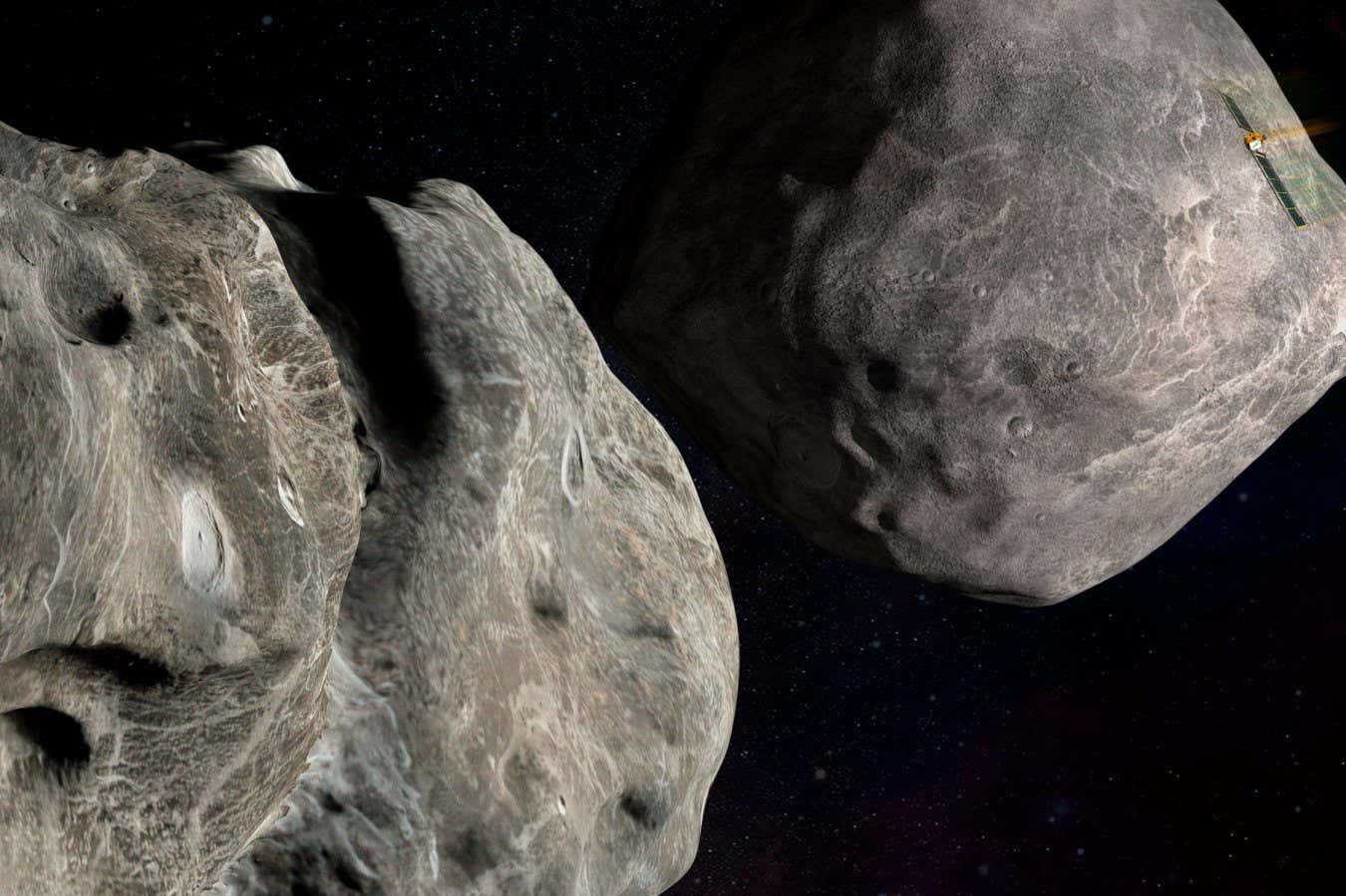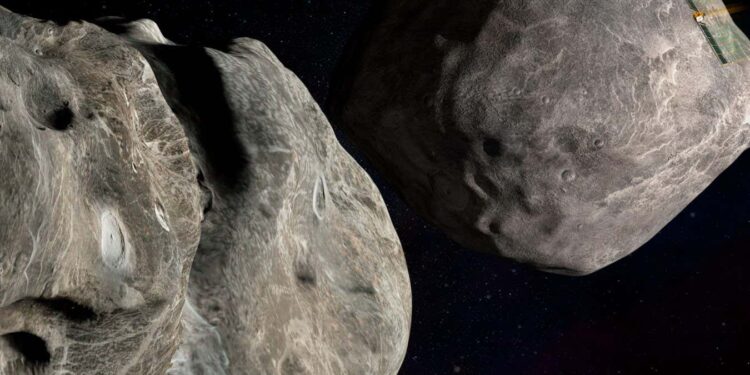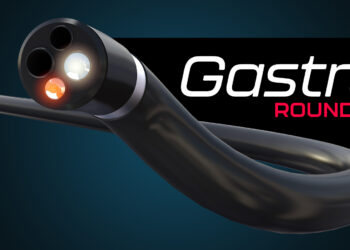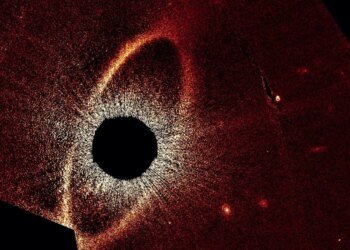
Illustration showing NASA’s DART probe, upper right, on course to strike the asteroid Dimorphos, left, which orbits Didymos
Steve Gribben/Johns Hopkins APL/NASA/AP/Alamy
After NASA smashed a spacecraft into an asteroid, its orbit slowly but surely changed over the next month, and astronomers can’t explain why.
In 2022, the Double Asteroid Redirection Test (DART) flew a nearly-600-kilogram satellite into a small asteroid called Dimorphos, which orbits a larger one called Didymos.
Before the impact, Dimorphos completed an orbit every 11 hours and 55 minutes. Observations soon after revealed that the collision had reduced the orbital period by about 30 minutes, but in the following weeks and months, the orbit shrank even further, by another 30 seconds.
Astronomers proposed this might be because the smaller satellite was gradually flinging out some of the rocks that were churned up by the impact and weren’t immediately lost, causing the overall system to lose energy and the orbit to get smaller.
Now, Harrison Agrusa and Camille Chatenet at the Côte d’Azur University in Nice, France, have calculated that the ejection of rocks can’t be the explanation, because Dimorphos isn’t massive or strong enough to send debris flying out of the system.
“A boulder could fly by Dimorphos, and Dimorphos will scatter it onto a wider orbit. That can happen, but that boulder eventually is going to come back and come close to Dimorphos again,” says Agrusa. “So all of its momentum will eventually make its way back and be transferred back into Dimorphos.”
Agrusa suggests that a more likely explanation for Dimorphos’s shifting orbit is that the impact sent it spinning in a complex way, which sloshed rocks and boulders on its surface back and forth. Friction from these boulders sliding around and colliding with each other could produce heat. The loss of energy as heat could account for the reduction in the asteroid’s orbit, he says, although the study didn’t model this.
“If you’re moving stuff around the surface, you’re changing the gravitational potential energy of Dimorphos itself,” says Agrusa. “This might be an avenue to slowly drop the orbit period over a month or so, because this would be a long-lived process.”
While this highlights the difficulty in predicting how asteroid orbits change after they are struck, it is less relevant for deflecting asteroids heading towards Earth, says Agrusa. This is because binary asteroid systems like Didymos and Dimorphos are fairly rare, and this effect would be unlikely to occur for a single asteroid changing its orbit around the sun, which is what matters for a potential Earth impact, he says.
Topics:
Source link : https://www.newscientist.com/article/2498319-nasas-asteroid-deflection-test-had-unexpected-and-puzzling-outcome/?utm_campaign=RSS%7CNSNS&utm_source=NSNS&utm_medium=RSS&utm_content=home
Author :
Publish date : 2025-10-01 15:00:00
Copyright for syndicated content belongs to the linked Source.













